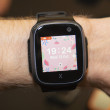Review: Microsoft's Windows Phone 8.1
Design
If there's one thing Microsoft has succeeded at in recent years, it's keeping the user interface and overall appearance of Windows Phone consistent. In fact, the WP user interface (which debuted in 2010) was later pushed to Microsoft's desktop operating system and is also now found in the XBox. The interface makes use of square or rectangular Live Tiles, which are apps/services running on the Start screen. Many of them are interactive, or refresh regularly with new content. They are sort of like miniature widgets. Windows Phone 8.1 doesn't change this basic idea. The appearance and functionality of the Live Tiles has been carried over. The Live Tiles are colorful, and arranging them on the Start screen can be rewarding in its own way. It's sort of like creating your own, custom puzzle.
The same is true of the main app menu and most of the baked-in applications. They retain the look they've had practically since day one with only slight changes here and there. That means you have a lot of black and white, with columns of apps and lists of settings. It is a fully modern-looking operating system that is unabashedly "Microsoft." It is dramatically different from Android and iOS, and I think that's a good thing. It helps Windows Phone stand apart and (mostly) prevents it from following a "me-too" script that otherwise might have it stealing from the competition.
There's nothing warm and fuzzy about Windows Phone, but I find it easy to like and use.
While Microsoft may not have changed the general design of Windows Phone, Microsoft has made a wide range of changes to the behavior of the home screen and various other aspects of the user interface.
Lock Screen / Action Center
One of the things I like best about the WP lock screen is that it can be customized with a significant amount of content. WP lets users set a background image that is visible when you press the lock button. This background image, however, can be an app if you want it to be. Some of the apps that can serve as the lock screen include Bing, Vevo, Twitter, Instagram, Facebook, LinkedIn, CNN, Tumblr, Pandora, Bing Weather, and many others. Whichever of these you choose will populate the lock screen with content pulled from the app. The CNN app, for example, loads the screen with breaking news stories. You get the point. Of course, you can stick with a static image if that's what you want.
The lock screen also provides some base level of notification support. WP8.1 allows you to choose notifications from up to 5 apps and stick them on the lock screen. One of these can be "highlighted." Each notification appears in a small box at the bottom of the screen. For example, I chose calls, email, messages, Facebook, and my RSS app. If I have a missed call, I'll see a 1 next to the phone icon. If I have 75 new emails, I'll see a 75 next to the email icon and so on. These give you at least some idea of what you have missed while the phone was locked. The one notification that is "highlighted" will actually reveal the content of the most recent incoming alert. If I choose to highlight text messages, I'll see the last message received displayed above the other notifications. This is all well and good, but it stops short of being a real notification center like those offered by Android and iOS, and that brings us to the Action Center.
Just like Android and iOS, Windows Phone 8.1 now has a drop-down notification center that offers a running tally of incoming alerts from all the apps that can send push notifications. The Windows Phone version is slightly different from Android and iOS starting with the name: Microsoft calls it the Action Center. The Action Center can be accessed from any app or screen by swiping down from the top. The Action Center can be seen from the lock screen, but you can place it behind a password if you're worried about security.
Four toggles appear at the top of the Action Center that turn on/off select radios. These toggles can be customized, but four is all you get. Some Android devices offer dozens of toggles in the notification tray. At least four is something. There's also a shortcut to the full settings menu.
Below these tools are the actual notifications. They are grouped by app or service. That means if I have 10 Facebook notifications, all 10 of them will appear together even if they were received before and after some emails and phone calls. Whatever notification arrived last drags all the notifications of the associated app to the top of the list. You can dismiss the notifications by swiping them off the screen. When you do this, you just clear them from the Action Center. For example, if I have 75 new emails since the last time I checked my inbox, and I clear them from Action Center, those 75 emails remain unread in my inbox, but no longer show up in Action Center. That's smart.
Action Center functions just as well as its counterparts from Apple and Google, though you can't do things like jump straight into an email reply like you can on Android. Having Action Center aboard Windows Phone 8.1 is great. It's an overdue addition to the operating system, and Microsoft did a good job with it.
The lock screen still includes a digital clock and the date at the bottom of the screen. The date/clock combo can't be changed, and can be hard to see if you have busy content behind it.
Start Screen / App Menu
The Start screen earns one killer new feature in Windows Phone 8.1: a third column for Live Tiles. This feature first appeared on the big-screened Nokia Lumia 1520 and later the Lumia Icon. Now all Windows Phones have access to this amazing expansion.
As far as I am concerned, this extra column is what's been missing from the WP experience from day one. I like the WP Start screen setup, but always felt the Start screen was too cramped, no matter how big the display. With three columns instead of two, there's more space for apps, shortcuts, and Live Tiles. It grants access to far more apps at once. I can now get all my key apps on a single screen. The Live Tiles can take three different shapes: small square, large square, or large rectangle. The Tiles can be resized and rearranged however the user chooses. (Widgets on Android devices can be resized to your liking, too, but Apple's iOS doesn't offer widgets or tiles, and the apps can't be resized at all.)
If three columns don't interest you, Windows Phone 8.1 allows you to select two, instead. One thing worth mentioning is the Live Tiles will all be smaller to accommodate the third column on existing devices. If you're using a device with a very small screen, this could affect the usefulness of some of the Live Tiles themselves. For example, text might be too small.
Windows Phone's Start screen doesn't slide to the left or right to provide more home screen space. Instead, it is a limitlessly long vertical column. You can add every app in the app store to the Start screen and need only scroll down to find it. Obviously at some point this becomes impractical, but you get the idea. You can stick quite a bit of content on the single, but long, Start screen.
Another neat-o treat added to Windows Phone 8.1 is the ability to make the Live Tiles transparent. All the tiles that are part of WP8.1 (i.e., made by Microsoft) can be rendered clear. The idea is to then place in image (a.k.a., wallpaper!) behind the Live Tiles that is then visible because the tiles are transparent. The result is cool and much appreciated. Though I liked the ability to choose different colors for the Live Tiles, making them see-through and putting a picture behind them is much better. The only way you'll be able to see the entire image is to fill the screen with tiles that can be made transparent. The other caveat is the Start screen can begin to look messy depending on the image you stick in the background. I think the benefits outweigh the cons in this case, though, and it adds to the "custom puzzle" appeal that I mentioned above.
The full app menu is accessed by swiping the Start screen to the left. It lists all the apps installed in alphabetical order. This screen cannot be customized, nor can the settings screens, which are packaged together in their own text-only menu. Like the Start screen, the app menu is a long, vertical column. If you have a lot of apps installed it can be a pain to swipe down and down and down to reach them all. That's why there's a little trick baked in: Tap any of the large capital letters that separate the apps and the entire alphabet will show up on the screen. Tap the first letter of the name of the app you want and you'll zoom down to that part of the app menu. Again, this is entirely different from the way Android and iOS organize apps, but it's a good thing.
Windows Phone itself doesn't support folders, but Nokia makes a separate app called App Folder. As the name implies, you can stuff apps into folders and then set the folders on the home screen for easy access to those apps without cluttering up your Start screen. As far as I am concerned, this is an essential app and should be part of Windows Phone. Thankfully it is free and was pushed to most Lumia handsets over the course of the last few months. Android and iOS both support app folders.
Anyone who uses Windows 8 or XBox regularly will have a firm grasp of how Windows Phone 8.1 behaves, as the familial lines are clear. I think it's fine for Microsoft to have a completely different way to organize the home screen and apps. It may not be for everyone, but WP8.1's Start screen and app menu are no less functional than their Android and iOS counterparts. In fact, with practice, I find jumping around the WP8.1 home screens, apps, and other menus to be faster than both Android and iOS.
Settings
The Settings menu is among the most barren and spartan designs possible. It is simple white text on a black background. Utterly boring. The settings are broken down into two main columns, one for system tools and one for individual apps. I wish the settings tools were organized better.
There typically aren't that many ways to control individual apps in Windows Phone. Installed apps that do allow for settings adjustments are listed alphabetically here. That's fine. It's generally not an overbearing list, even if you have more than 100 apps installed. I can't say the same for the way the system settings are arranged.
In both Android and iOS, the settings are grouped into like functions. For example, both competing OSes place controls for all the device radios near the top and make them easy to toggle on/off or adjust. They are often visibly set apart with shading or borders that associate them. In Windows Phone, all the settings appear in an unordered, seemingly random list. It would be helpful, for example, if they were listed alphabetically or by function. They aren't. Hopefully Microsoft has a resolution for this in its roadmap for Windows Phone 9.
Don't misunderstand me. The settings menu is a simple one to interact with; I just wish it were arranged with some sort of sense.
Multitasking
Multitasking is accomplished in much the same way as with Android and iOS devices. If you press and hold the Back button, you'll see a horizontal carousel with cards of all the recent apps you've used. You can scroll backward to other apps, which are in a suspended state, and re-enter them at any time. Given how similarly this feature works on Apple- and Google-based devices, I don't think any one platform has an advantage. It's simply a tool for switching between apps.
Performance
Microsoft provided us with a version of Windows Phone 8.1 that's at least two prior to the general release. In fact, the build of WP8.1 we're using is one step ahead of the developer preview. In other words, it was a bit buggy - but that's to be expected. Despite a few bugs here and there, Windows Phone is a fast, fast platform. There's no doubt in my mind that it is faster than Android and iOS no matter the device. It is less prone to hangs, crashes, and jitters, that's for sure. Once you become knowledgeable about the UI basics, you can fly.


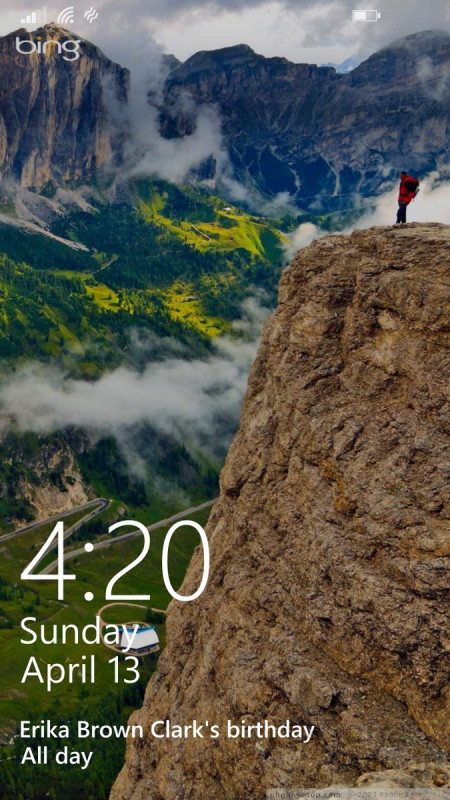



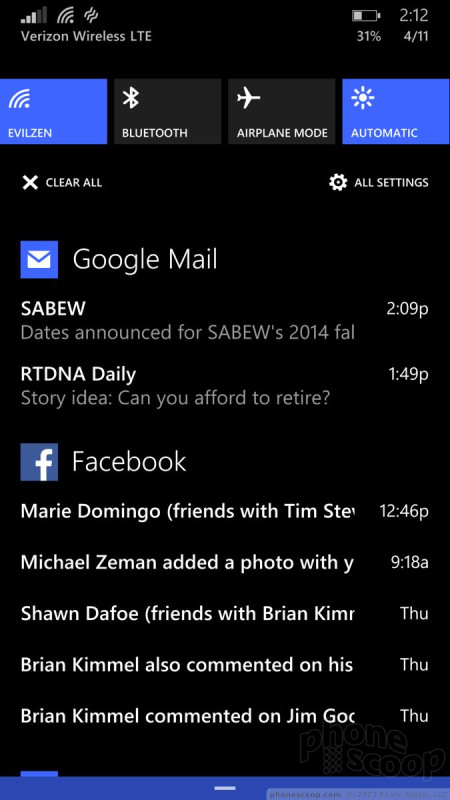



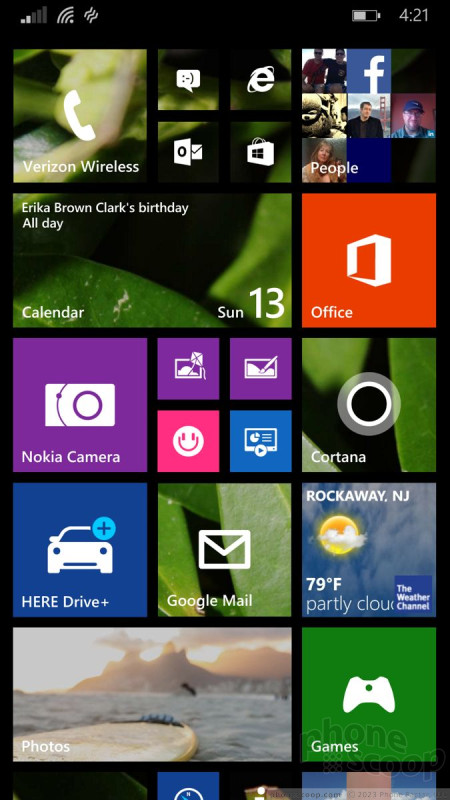




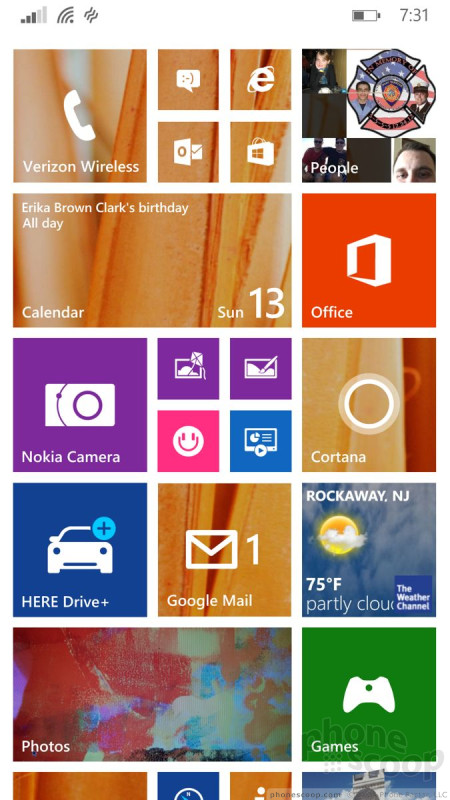





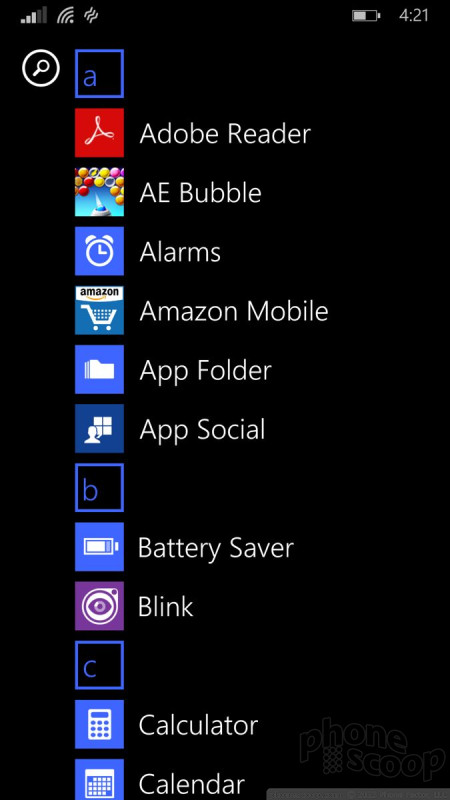



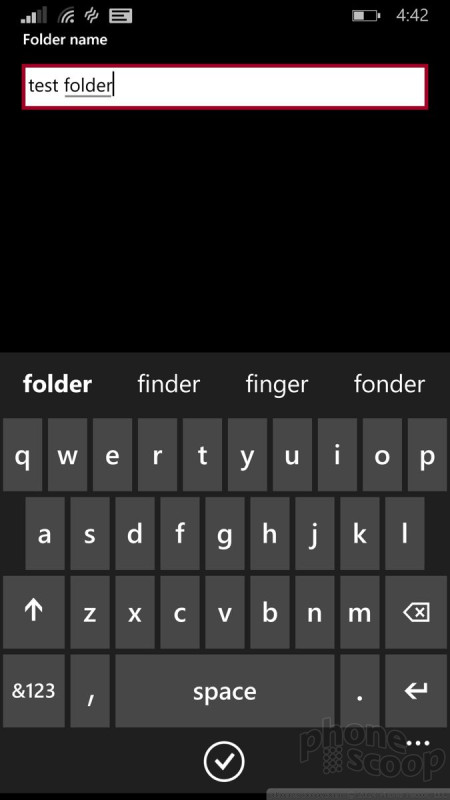






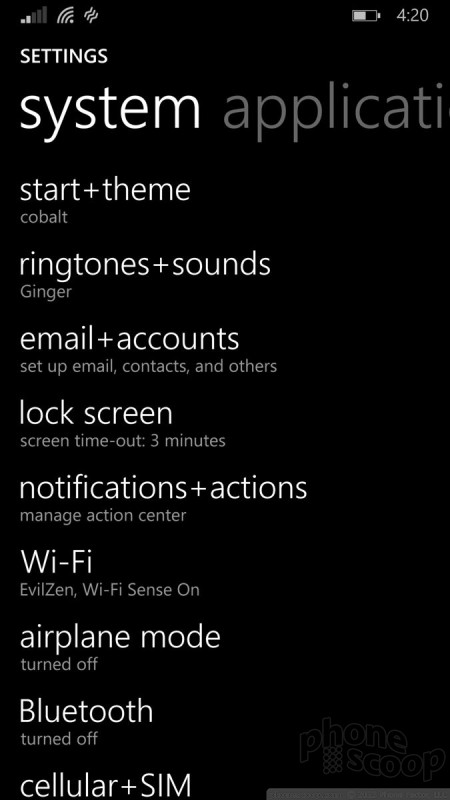










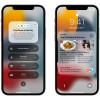 Apple Announces iOS 15
Apple Announces iOS 15
 Samsung Refreshes Galaxy S Series with S Pen, New Cameras
Samsung Refreshes Galaxy S Series with S Pen, New Cameras
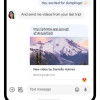 Major Update to Google Messages Brings iPhone-Compatible Emoji Reactions
Major Update to Google Messages Brings iPhone-Compatible Emoji Reactions
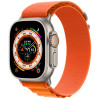 Apple Watch Goes Ultra
Apple Watch Goes Ultra


